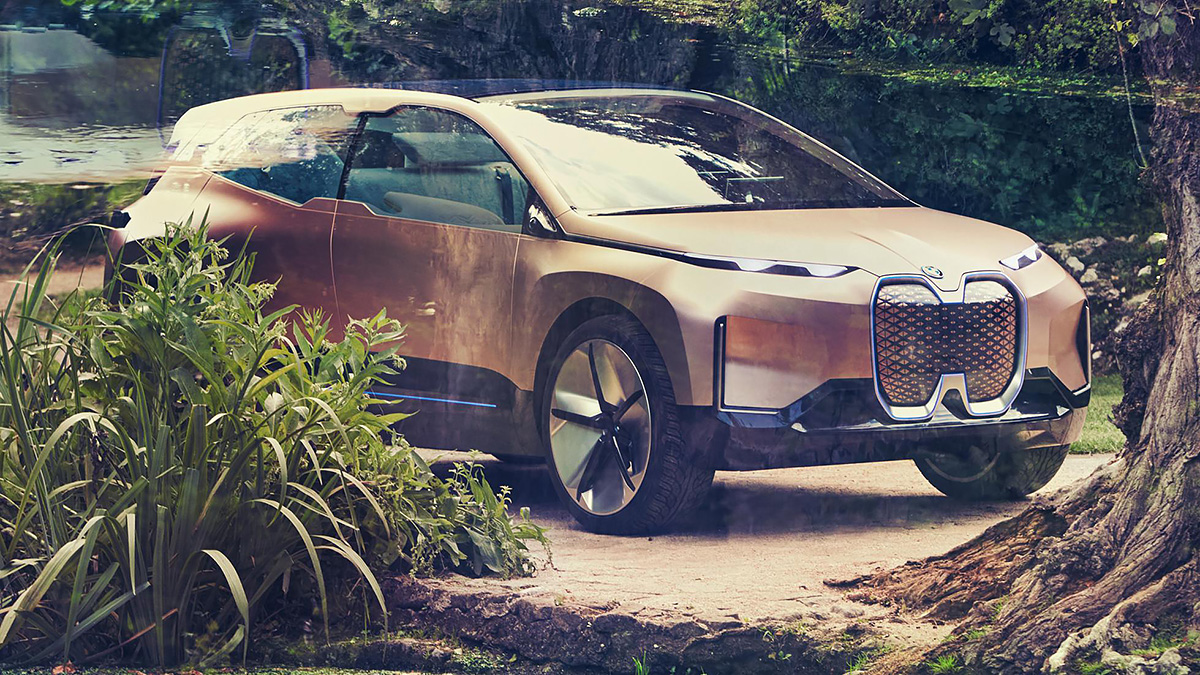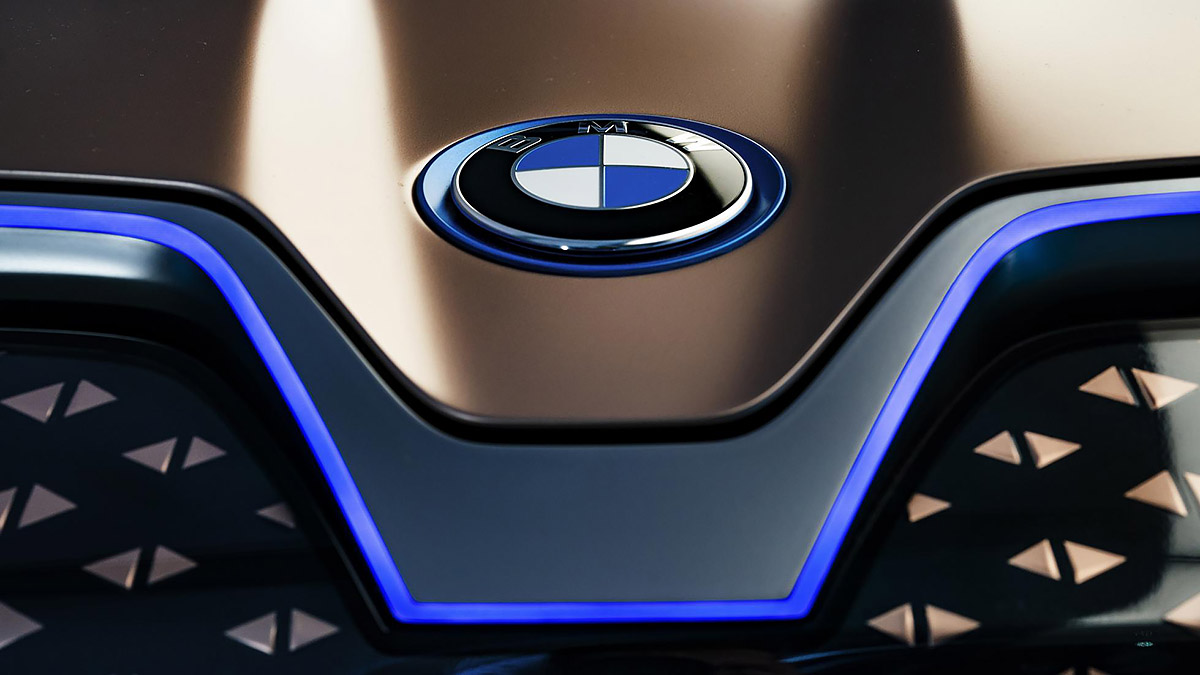The Vision iNext is BMW's first level 3 autonomous car

Is it just a show car?
Squint beyond the concept-car flourishes, and this is the autonomous, electric BMW crossover for the road ahead. The production version, BMW says, will happen in 2021.
They’re calling this “your favourite space”. A bit of a swerve from “the ultimate driving machine”, eh? It’s all about the cabin, the cocoon. Most of all, about the way autonomous and connected travel should give you the most precious luxury of all: more time.
As we’ll see, BMW’s claims of fully autonomous capability aren’t for all roads all the time, not in 2021. Even so, given it’ll be competent enough to take over on motorway stretches or busy suburban arterials, it seems likely it could indeed net you a whole lot of new me-time. Or us-time with your passengers.
Talk me through the design…
BMW i design chief Domagoj Dukec stresses, “Technology must be a human experience. Design enables this. It’s a human necessity to have a favourite space. This car can drive autonomously so you must trust the technology.”
But just to remind you it’s trustworthy, it’s got the hard shell of a crossover. Or maybe that just reminds you it’ll be a shield even when the autonomy fails. Anyway.
“It’s bold, but the simple surfaces and fading paint [coppery at the front, rose-gold behind] make it gentle. With the thin pillars it’s like a tree-house on wheels.” Well that sure makes a change from the usual ‘looks like it’s moving when it’s standing still’ car-designer cliches.
At the front the double-kidney grille is enormous, and its two halves are siamesed together. So not a double-kidney… and not actually a grille. Electric cars don’t need so much cooling, but they do need low-drag surfaces. So it’s a smooth panel. This car also needs a big clean surface through which it can aim the beams and sensors for autonomous driving. There’s the new job-description for the ‘grille’.
Lots of tech inside?
Inside, says Dukec, “Different rooms have different characters, like home.” So the front is a buff suede, the rear a blue woven jacquard. The seats curve unbroken into the doors.
Technology washes around the whole cabin, but its controls don’t impinge on the louche look of the furniture. Strictly no knobs or buttons then; the interfaces are hidden. And they’ve a fab new coinage for that: “shy-tech”.
For instance, in the rear, backlit LEDs embedded below the upholstery surface illuminate to trace your fingertip strokes across the cloth. Draw a quaver to activate the stereo, then swipe to change tracks, or pinch to alter the volume. That veneered coffee-table console in the front is also sensitive. A projector is hidden in the rear headlining, able to sense and direct images onto surfaces you move around the cabin.











Will it still drive like a BMW?
As with other recent BMW concepts, the iNext gives the person at the wheel, the part-time driver, a choice of two modes. ‘Ease’ is the autonomous one. The steering wheel and pedals retract, and the dash screens are given over to entertainment. The head-restraints fold to promote conversation between the front and back. Switch to ‘boost’ mode and the wheel and pedals come back out.
BMW’s head of R&D, Klaus Fröhlich says DIY driving will always matter in this as in all the firm’s cars. “The driver-oriented interior is still at its centre. We invented that.”
Either way, the electric drive serves up a range of 400-odd miles (644km). Come to think of it, probably the human, by having more fun, would go less far.
Talk me through the self-driving.
The possibility of fully autonomous driving proves slippery. R&D chief Fröhlich tells Top Gear that his firm will have developed the sensors and processing capacity to make it technically possible for self-driving in most places by 2021.
Already there are some routes in Germany where autonomous BMWs travel daily. Going to new routes needs mapping. “The high-definition maps are not a problem,” says Fröhlich pointing out that BMW has a stake in mapping company HERE. “But you also need a real-time map from swarm intelligence.” In other words, cars must start to let each other know via the cloud every small obstacle on the road, as they crop up.
He says hands-off motorway driving is already legal in the US and China. Current BMWs will do that, and the upgraded system being introduced in several BMWs soon, he claims, will be “much much better”.
But he acknowledges city driving is different, not just because of legislation but about the degree of autonomy that’s allowed. In cities, autonomous cars have to dice it with normal vehicles, and two-wheelers and walkers and animals and skateboarders and what-have-you. “An autonomous car must itself be predictable,” says Fröhlich.
But it also has to avoid being too timid. “If the car always just stops [when it sees a pedestrian or other potential obstacle] then other cars will crash into it.” That won’t be such a problem in new Chinese cities, or some US ones, because vehicles are effectively separated from walkers and cyclists. “You don’t need all this computing power to calculate the trajectories of all those pedestrians,” he adds.
Non-vehicular traffic isn’t the only issue. “Also the system must work in the rain. The sensors must not ice up. And often you can only drive onward if you break some rules.” As other autonomous driving engineers do, he mentions the problem of having to cross a solid line to get around a set of road works.
He is clear on one question that often crops up around the self-driving car: who’s fault will it be when it does crash? The person in the driving seat, or the car manufacturer? “The responsibility, legally, is with the carmaker.”
Which is another reason why he says they must eventually co-operate over the software and protocols, although he adds that the Vision iNext is BMW’s own effort.

So when’s full-time self-driving going to come?
So you’ve got legal issues, insurance issues, and simple traffic issues all to be overcome. In Europe’s historic cities, Fröhlich says it’s obviously going to be after 2021 when we see a fully self-driving BMW carrying the public. He won’t give a firm date. But he does say tell Top Gear it’s actually “very soon.”
Why? Because although lawmakers in Europe have been slow to allow autonomous cars so far, Fröhlich says that will change when they see the advantages. “If cities can solve their problems – congestion, pollution, accidents – using my car, of course they will allow it.”
Seems a bit late doesn’t it?
This is the firm’s technical flagship. “The iNext will be the best we will have at BMW in 2021,” BMW i chief Robert Irlinger told TopGear. “The best autonomous drive, the best electric drive and batteries, the best interface, the best interior technology, the best connectivity. And when you bring these things together, you get extra benefits.”
Of course BMW’s rivals will have had their purpose-built electric crossovers on the market for some years. BMW had a strong early position with the i3. Has it blown that?
Well, the iNext won’t actually be the first electric BMW crossover. There’s an electric X3 at the end of 2019.
There’s also a low-slung saloon, the i4 (think, if you will, Tesla Model 3) which was previewed by the Vision i Dynamics concept at the Frankfurt show in 2017 and comes to the market in 2020, with a claimed range of over 563 kilometres and 0-100kph time of 4.0 seconds. By 2025, BMW will have launched more than 12 pure-EVs, including a Mini in 2019.







